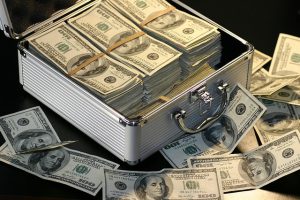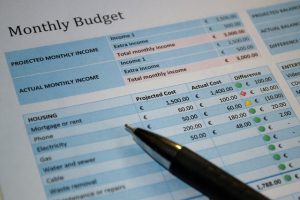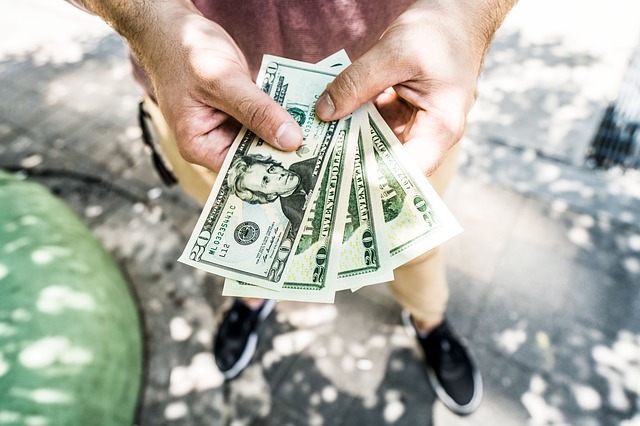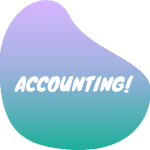If you know something about personal finance, you understand how complicated it can be to make sure all bills are paid on time, that you are fully insured, and that your credit is healthy.
Juggling the different aspects of your finances usually means savings and investing takes a back seat to everything else on your plate. This is one of the reasons why so few people under the age of 35 have any real savings. Luckily, there is one easy technique you can use to make sure your savings are always growing: Pay Yourself First.
Savings First, Bills Later

Most people start the month by paying all their bills, budgeting some cash for having fun or buying something extra, and then finishing by putting any cash remaining into savings. When you use the pay-yourself-first model, the order of these steps is flipped.
Here’s how it works. On every payday, start by taking out money for savings and put it directly into your savings or investing account. Most banks have accounts that will let you do this though automatic transfers. This is one banking service that you should definitely take advantage of.
Once your savings is taken care of, use the remaining cash to pay your bills. Any money remaining can be used for fun and leisure. This method is a no excuses savings approach. No matter what else is happening in your life, you are paying yourself by contributing to your savings. This habit ensures that your savings and investments experience a steady growth rate.
Pay Yourself First in Action
Here is how it works:
- Set up automatic transfers from your checking account to your savings account every month, ideally just a day or two after you normally get your paycheck. This is the paying yourself step.
- Pay your rent, credit cards, and any other bills for the month.
- The remaining cash is “free”. Use this for going out with friends, buying something you want, or contributing even more to your savings.
Why This Is Important
You already know the importance of having a well-developed budget or spending plan. The downside is that these require constant vigilance. On a regular basis, you should be using your receipts and account reconciliations to adjust your spending plan to match your actual spending. In the real world, very few people follow through on this for more than a few months at a time, even with the best intentions.
By always setting aside savings before dealing with any other expenses, you will ensure that it will be growing, regardless of what happens to anything else. This is the most effective way to save since it means you cannot “cheat”.
Do I Still Need a Budget?

Using a “pay yourself first” savings strategy is not a replacement for maintaining an up-to-date budget or savings plan, but it will make the process much easier.
Without this strategy, your budget or savings plan requires time and attention. You need to account for your income, keep an itemized list of your bills, budget for food and groceries, and finally see how much is left over for savings.
By paying yourself first, you no longer need to worry about setting aside money for savings. This is done automatically before you have to think about the rest of your budget. Simply knowing that you are automatically building a large savings cushion to deal with emergencies, such as unplanned car repairs, lifts a ton of stress from your shoulders.
Best of all, since you know that your savings is already accounted for every month, your leisure spending will be guilt-free, so long as you use cash and avoid making too many purchases on your credit card. Your budget or savings plan is transformed from a task master, dictating what you can and cannot do each month, to a partner. Updating your budget will be easier since you no longer need to worry about having enough money left over to save. If you want to increase the amount of money you are saving, you simply need to increase the amount of your automatic transfers.
How Do You Pay Yourself First When Cash Is Tight?
Paying yourself first makes sense if you have a balanced monthly budget, but what happens if you are behind on your bills?
With a pay-yourself-first savings strategy, your savings always comes first. This means dipping into savings is almost entirely off-limits. By following this strategy, you would rather pay a bill a month late than take money from your savings to pay it off.
This is also why the strategy works. The amount you save each month is entirely off-limits for any other type of spending. The only exception is if you are severely behind on debt payments and have no other options.
Cutting Spending

Building this mentality of “save first” is important. Everyone wants to save, but often people treat a savings account as just another source of money. For example, people want to avoid credit card debt, so if there is something they want to buy, they know it might be irresponsible to buy the item on credit. Instead, they will just dip into their savings since that money is already theirs.
This is dangerous thinking because withdrawing from your savings is a loan. You are borrowing money from your future self. Unlike a credit card with required monthly payments, you are unlikely to pay back this loan to yourself, damaging your long-term wealth. By adopting a pay-yourself-first strategy, it removes spending decisions. If you really want to buy something today, use your credit card. If you do not want to incur the finance and interest charges from the loan, then re-evaluate if the purchase is really worth it!
Making Pay Yourself First Work
One way to make pay yourself first work is by keeping less of your savings as cash. This helps prevent withdrawing cash unless it can’t be avoided.
One of the best ways to do this is by converting a high percentage of your savings into investments like stocks, bonds, and mutual funds instead of simply having cash sitting in your savings account. By moving your savings into investments, you kill two birds with one stone.
Less Liquid Savings
A “liquid asset” is something that can be quickly and easily converted into cash and spent. Savings accounts are extremely liquid assets, which is why some people have a hard time building up their savings fund: cash can be spent. By converting a large percentage of your savings account directly into investments like stocks, bonds, ETFs, and mutual funds, there is an extra step you’d need to take before the cash could be spent. Since you would need to sell your assets first in order to spend the cash, you are less likely to do so unless the spending is extremely important to you.
Making Money Work
Another advantage with turning savings into investments is that invested money will, on average, grow much faster than money in a savings account. Instead of receiving only 1-2% of growth from a savings account, you could see returns of 8-10% by investing in index funds or diversified mutual funds. Investments will help your savings grow much more effectively.
Skin in the Game
When you purchase investments, your brain reacts just as it does when you pay a bill. Your mind sees this as “spent money,” not money that can be used to make purchases. As your investment portfolio grows, it becomes exciting to watch your money grow, and you will be paying closer attention to how your money works for you. This encourages increased saving and investing. Over time, this helps build a nest-egg of wealth you may have otherwise simply spent.
When Should I Use My Savings?
A pay-yourself-first strategy includes a mindset of making withdrawals from your savings account as infrequently as possible. However, there may be times when making a withdrawal is beneficial.
It is okay to make withdrawals when
- Investing in a physical asset, like buying property or a vehicle
- Investing in a paper asset, like stocks, bonds, or mutual funds
- Starting a business
- Paying off big debts, like student loans or a mortgage
You should not make withdrawals when
- You want to make a purchase you “deserve” but don’t have the cash for
- You experience an emergency which will take fewer than 3 months to pay off without dipping into your savings
- Buying holiday and birthday gifts. (Making these purchases should be part of your normal spending plan or budget.)

Get PersonalFinanceLab
This lesson is part of the PersonalFinanceLab curriculum library. Schools with a PersonalFinanceLab.com site license can get this lesson, plus our full library of 300 others, along with our budgeting game, stock game, and automatically-graded assessments for their classroom - complete with LMS integration and rostering support!
Learn More[qsm quiz=148]
Challenge Questions
- What do you understand by the concept Pay Yourself First or sometime known as Save first, before you spend?
- How might this help you budget?
- If you were going to start Paying Yourself First today, how would you go about it?
- What are the advantages of Paying Yourself First?

 Teacher Introduction Webinars
Teacher Introduction Webinars Dupont Analysis
Dupont Analysis Price Ceilings
Price Ceilings 9-09 Put Versus Call Interest
9-09 Put Versus Call Interest